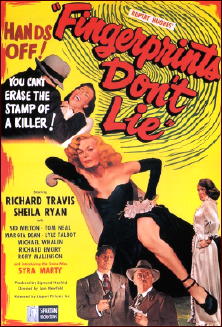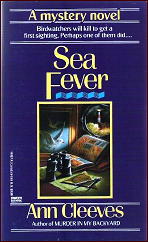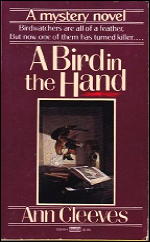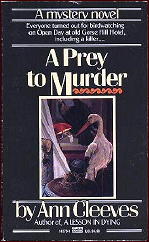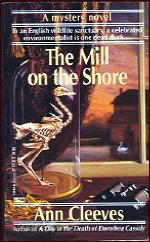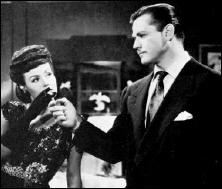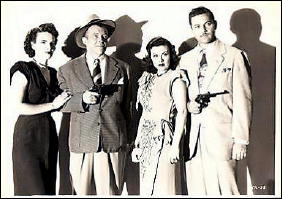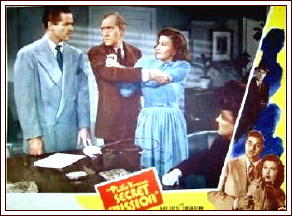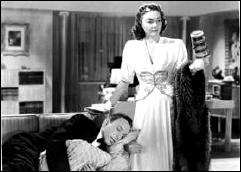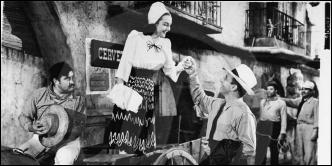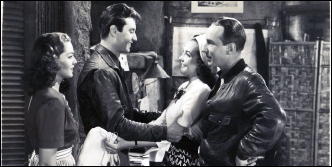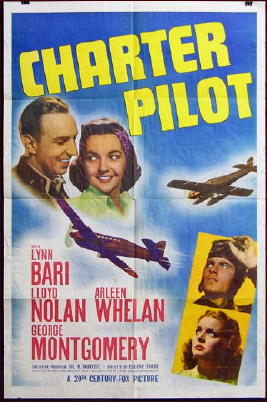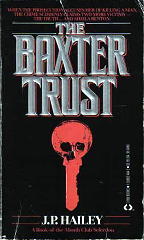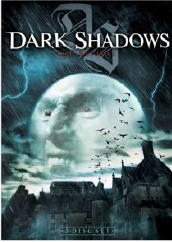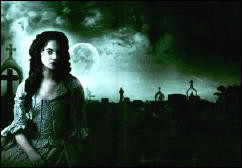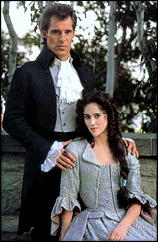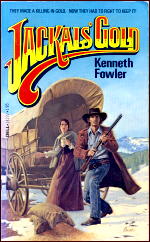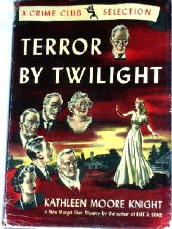Wed 5 Sep 2012
A Movie Review by Dan Stumpf: FINGERPRINTS DON’T LIE (1951).
Posted by Steve under Mystery movies , Reviews[10] Comments
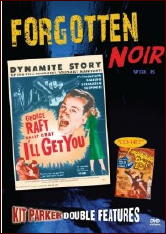
FINGERPRINTS DON’T LIE. Spartan Productions / Lippert Pictures, 1951. Richard Travis, Sheila Ryan, Sid Melton, Tom Neal, Margia Dean, Lyle Talbot, Michael Whalen, Karl Davis. Director: Sam Newfield.
Early this year an old childhood buddy of mine gifted me with a box of perfectly-chosen DVDs: no classics, just a lot of stuff I kinda wanted to see but didn’t want to spend much money on. So far, the gem of the set has been Fingerprints Don’t Lie (Spartan Productions, 1951) an enjoyably bad film that passes too quickly for its deficiencies to grow irksome.
Yeah, this is listed as “A Spartan Production,” and Spartan it is, but “Cheapo” might have caught the spirit better, as it was produced by Sigmund Neufeld and directed by Sam Newfield, the driving talents (for want of a better word) behind PRC, which has been widely celebrated as the most penurious studio in Hollywood. Fingerprints carries nobly on in the PRC tradition, with tacky sets, perfunctory acting, and a screenplay that seems more interested in killing time than actually getting anyplace.
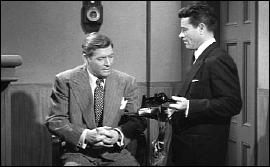
What makes it fun to watch, though (for me anyway) is the amusingly slip-shod nature of the thing. Instead of background music we get an organ soloist, just like in the old-time soaps, bridging scenes and setting moods with a turgid melancholia that broke me up every time.
Then, late in the film, we get one of those cinematic conventions that normally go unnoticed: two characters talk about checking out a suspect’s apartment on the sixth floor of the Metropolitan Hotel, and we cut to an exterior shot of the Metropolitan, the camera sweeps up to the sixth floor, and we cut to the two characters walking into the apartment.
It’s the kind of movie-shorthand you’ve probably seen dozens of times and never noticed. Only in this case they couldn’t afford to send a cameraman out for an exterior shot, so they simply panned up a photograph of the hotel —- which might have worked except that no one noticed the photo was printed backwards and we see the words LETOH NATILOPORTEM in mirror-image!
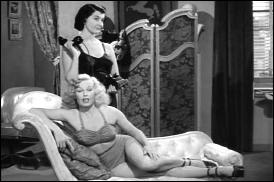
Still later, the gaffes come fast and funny as the Police close in on the Crime Boss and his Moll in a rather economical–looking suite. When they tell the baddie he’s going Downtown, the obliging Moll opens her purse, ostensibly for lipstick, but holds it up what seems like an eternity as he sees the gun inside and they exchange significant glances. At some length.
Much later (it seems) he reaches inside the purse and fumbles around for several seconds before finally pulling the gun out — upside down! Whereupon he spends several more seconds getting it pointed at the cops, who promptly register surprise. Now that’s acting!
Following a bit of stand-off, the Crime Boss eventually shoots a cop, who bends sharply forward, as if hit in the stomach, then apparently remembers some long-ago instruction from the director, straightens up and grabs his supposedly-wounded shoulder. Bullets fly (or rather, bullet-type noises fill the soundtrack) till our bad guy (WARNING!) “falls” out a window.
Actually, we see him slide out the window-set, lie down on a not-quite-hidden platform and roll out of view. Which at least gets him mercifully out of this turkey.

I should perhaps add that the unfortunate actors in this thing at least carry on manfully, ignoring the paucity of their surroundings and the deficiencies in the script. In one scene, the prosecutor is played by Tom Neal, who would soon be facing a prosecutor himself. An actor named Sid Melton gamely struggles to apply comic relief as a newspaper photographer who can’t work a camera, and Karl “Killer” Davis makes a rather effective Hood. Altogether a game bunch, and it’s just a pity they had so little to work with.
Editorial Comments: This film, if you would like to obtain a copy, is easily available on DVD, as part of a two-for-one “Forgotten Noir” pair of offerings. See the image above. I’ll Get You, with George Raft and Sally Gray, is the main feature, with Fingerprints getting only second billing (in very small print).
Also worth noting, as Dan has already pointed out in a comment following Michael Shonk’s recent review of Philo Vance, Detective, this is one of the movies that was re-titled (as Fingerprints) and edited down to less than thirty minutes in a syndicated package of films sold to TV stations in the early 1950s.
